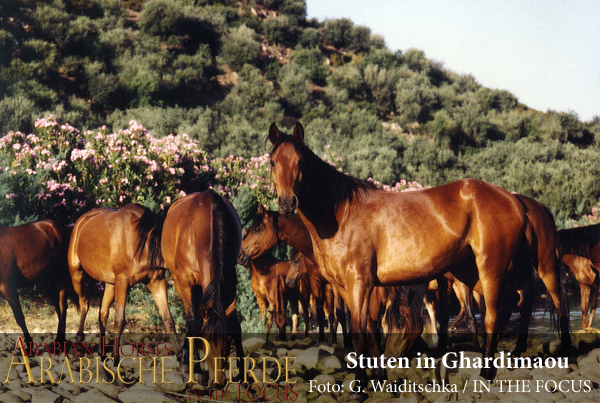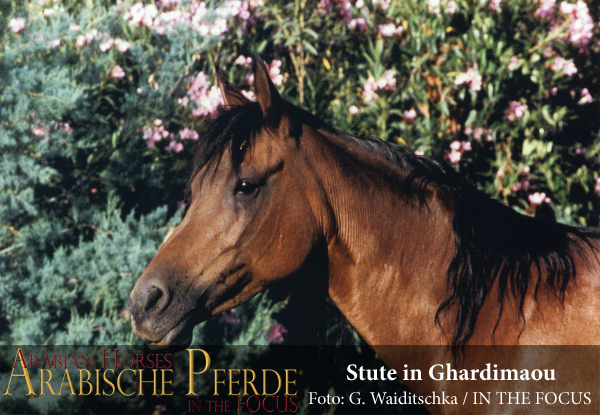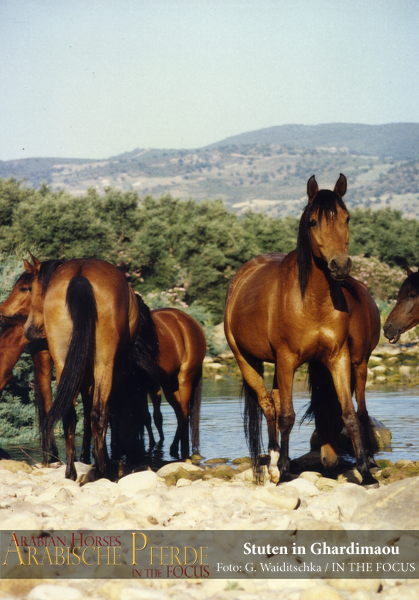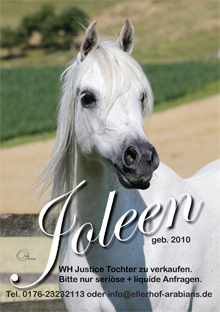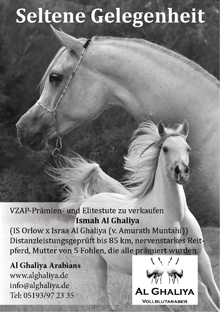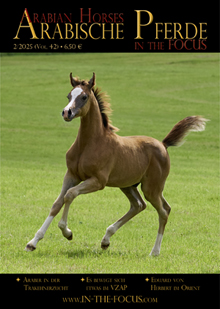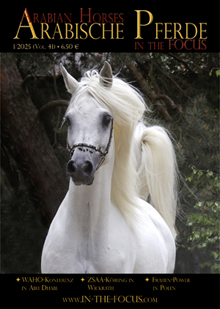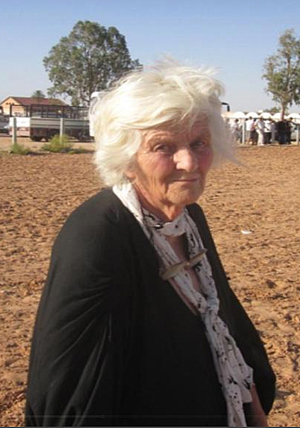
Gisela Bergmann died in August 2020 in her adopted home Tunisia. The native German emigrated there with her husband in the 1960s. Both worked in development aid, her husband, who died in 2004, was an agricultural engineer and had a contract with the National Institute for Agricultural Research of Tunis to carry out a project to irrigate the upper Medjerda valley.
Soon they discovered their love for the native Arabian horses and Sloughis. In the north-west of Tunisia, near the Algerian border, they set up the Barakat stud in Ghardimaou with horses that came from the south of the country, from the Maknassy area. These original Tunisian Arabs can partly trace their lineage back to horses that Frédéric Lovy imported from Saudi Arabia and Syria at the beginning of the 20th century. Gisela Bergmann’s breeding began with a black foal, which developed into her riding horse, and which she later rode around 2000 km per year, including on trail rides that she offered also to foreign tourists.
It was 1994 when I met Gisela Bergmann. I was in Tunisia at the invitation of the Ministry of Tourism, and when our press officer found out that I was going with Gisela to the Algerian border, he was shocked – that would be far too dangerous! I left the group at “my own risk”, met Gisela in Sidi Thabet and together we drove to Ghardimaou with her old pickup. Even the way there was exciting, because we saw a large box and something moving in the grass on the side of the road. Gisela guessed right away what it was and stopped: Four little kittens could be saved in this way and found a new home with her at the Barakat Stud.
Her horses were impressive, mainly because I have seldom seen such a uniform breeding herd. We found the mares by a small stream, which was picturesquely lined with blooming oleander. They were all dark brown, hardly any markings, and uniform in appearance, shape and size. It was important to her that these horses are descended from “desert horses” that grow up in a hot climate and under harsh environmental conditions – moreover, most of these horses are selected for performance, be it on the racetrack or on long trail rides, similar to the migration of the Bedouins. “Beauty” wasn’t a criterion, and yet they were beautiful. Not a modern type, no, but expressive, noble and dry. With this special selection and the environmental conditions, special characteristics have been preserved that may no longer be present in other populations, for example these horses are particularly characterized by iron-hard hooves. And they are extremely durable – it was not uncommon for Gisela’s horses to live to be over 30 years old.
In 2004, I was in Tunisia for the last time and met Gisela in Sidi Thabet, unfortunately I didn’t have enough time for a trip to Ghardimaou. Years later she had great financial problems and breeding and keeping her horses hung by a thread. But Gisela was adamant and impossible to get down, even if her life was hard and full of privation. In 2013 she still had 14 horses. She received no official support whatsoever. Friends who wanted to help her, suggested that she move to Tunis: “Everyone wants me to go to Tunis, but I don’t want that. I have my roots here in Ghardimaou. I live here for more than half of my life, ”she once said in an interview with La Presse de Tunisie. Now she died at the age of 87 – may she rest in peace.
Gudrun Waiditschka
